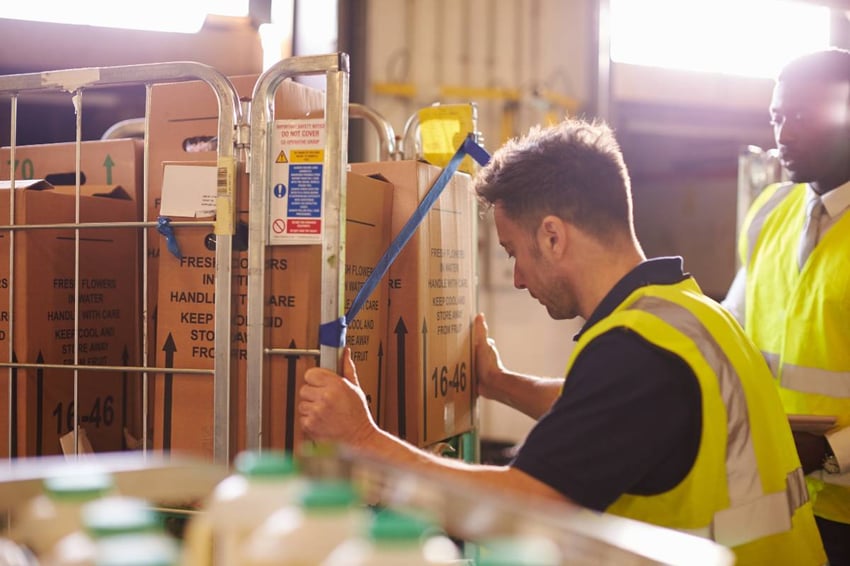How to Eliminate the Risk of Musculoskeletal Disorders

Pushing, dragging and pulling heavy wheeled loads can take its toll on staff – and employers need to remain vigilant to the risks of manual handling, as MasterMover’s Andy Owen explains.
Workplaces of all shapes and sizes face pressure to reduce wasted time and improve productivity. From hospitals to manufacturing sites and logistics operations, organisations all want to do more, with less. Still, when times are busy it’s important to pay attention to the safety of staff and to consider the risks associated with manual handling.
Consider the effort needed to push or pull a loaded roll cage. A type of wheeled container used to move goods, manually propelled roll cages are a common sight in many environments including shops and warehouses. While this is an innovation that allows for greater speed and efficiency, it’s not without danger: a single loaded roll cage can weigh more than 500 kg, a big ask for one person to move even when the floor is smooth and flat. Moving up and down slopes, around corners and through congested areas and doorways, in confined and tight spaces, can eventually take a toll on staff.
Not to mention the immediate danger posed by moving a loaded roll cage. According to data from the Health & Safety Executive (HSE) companies that use roll cages continuously have found that up to a third of their accidents are roll cage related. Many of these accidents are associated with attempts to stop roll cages from overbalancing, crush injuries and the trapping of hands and feet.
It’s the same issue for other types of wheeled loads, which may only get heavier and more awkward to manoeuvre – yet all requiring a certain degree of physical pushing, dragging and pulling. Whether it’s a laden laundry cage in a hospital, an industrial sized vessel in a lab or kitchen or a trolley moving tools and equipment in a factory (indeed, any wheeled load) the potential for short-term and long-term damage is ever present.#
Health & Safety Executive - Musculoskeletal Disorder Statistics
HSE figures show that 6.9 million days were lost to work-related musculoskeletal disorders (MSDs) in 2018/2019, with poor manual handling practices one of the major causes of time off. Around 40% of MSDs were related to back issues, with 41% relating to upper limb or neck problems.
When there are added pressures as a result of increased demand, it can be the case that safety takes a back seat. This is a false economy. As the figures from HSE show, by not paying enough attention to the dangers of poor manual handling, productivity also suffers.
How to Reduce Manual Handling Injuries
So, what can be done to improve safety and boost efficiency too? The first step is to undertake a risk assessment, map out any tasks that involve moving, asking how much time these tasks currently take and then try to reduce or eliminate the amount of manual handling that is required.
The Ideal Manual Handling Solution - Electric Tugs & Powered Tugs
Using a solution such as a MasterMover electric tug can also help, by significantly reducing manual handling during movement as well as taking the strain out of pushing and pulling. An electric tug attaches to a wheeled load and uses a combination of power and traction to take the strain. It’s like a ‘second operator’ – one that provides the power to move the heaviest of loads.
In addition, a user has complete visibility and is able to guide the load from the front rather than pushing from the back – further lessening the risk of accidents. No licence is needed to operate an electric tug, so any member of staff is able to take a course of short training and still feel confident in its use.
Furthermore, there is no trade-off between implementing a culture of improved safety and one of quick turnarounds. The use of an electric tug can cut down on wasted time, the reliance on waiting around for a trained forklift operator to become available and other non-value-added activities, freeing up employees to concentrate on other tasks that should be more of a priority in the business.